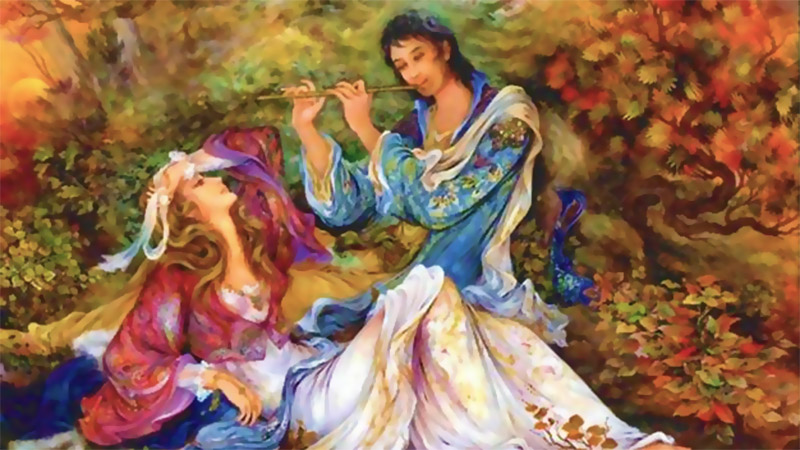 Signin with Google
Signin with Google Signin with Facebook
Signin with Facebook Culture
CultureSepandarmazgan, the Persian Day of Love and Women

Love has always been a crucial component of Persian culture. Whether it's within the sweet verses of Persian Poets or through the spiritual love of Sufis for God, love was spread through Persia and Iran for millennia. But did you know that long before the creation of Valentine's Day, it existed in Persia a day to celebrate love and express respect toward women? This day is called "Sepandarmazgan", or more recently, "Esfandegan".
Celebrating the Mother Earth
The origins and story of this celebration belong to the roots of the Persian Empire, some 3500 years ago. Back then, the Achaemenid Dynasty ruled over one of the world's major empires. Way before Islam, glorious Persian kings from Cyrus the Great to Darius I, were Zoroastrian believers. For them, nature was highly respected and loved, in particular, the fire, seen as a sacred element.
Zoroastrians believed that Earth was a deity called "Sepandarmaz": the loving mother, the guardian angel of Earth, and breeder of all creations and human beings. She protects the earth as a mother tenderly looks after all her children equally. The loving goddess was praised on the fifth day of the fifth month of the solar calendar, both being called after her. Nowadays, it matches with the 29th of Bahman (February 18th).
An expression of love and respect toward women
As a symbol of motherhood, Sepandarmazgan was a holiday to honour women and the concept of fertility. According to the custom, during this day all women were put on a pedestal and men offered them gifts to demonstrate their respect. During that day, women were the sole sovereign rulers, listened to and obeyed by all. Thus this day is an eternal manifestation of love and respect toward women. The 11th-century historian Gardizi tells us that it was sometimes called "Mard-Giran", literally "possessing men".
Besides this main ritual dedicated to women, the great Persian scholar Al-Biruni recalls that people ate grapes and pomegranate seeds on this day. For long, the 5th day of Spandarmad was the day of "Jashn-e Barzegaran", the Farmers' Festival: the earth goddess Sepandarmaz was worshipped by planting trees, with the hope that she consents to bring good harvests.

The Iranian Valentine's Day
Contrary to Nowruz and Yalda, two of the Persian deep-rooted ceremonies, Sepandarmazgan has slightly faded away in the popular culture of Iran but is now the object of a renewed interest. Even though Valentine's Day is celebrated in Iran, as well as everywhere in the world, a few days earlier, it has not outshined its ancestor. It's still the occasion for many couples to celebrate their love, in the purest Iranian tradition. Their offer themselves gifts, as reminded by the red hearts embellishing the shops' windows, before maybe, remembering together the famous Persian love story of Leyli and Majnun in mythical poems of Shahnameh, or Shirin and Khosrow in the collection of Nezami's Panj Ganj as a Unesco's memory of the world heritage.
By Nazanin Moayed



